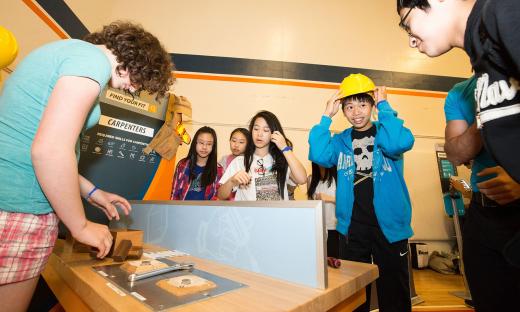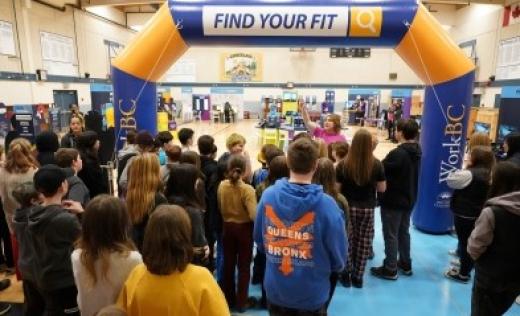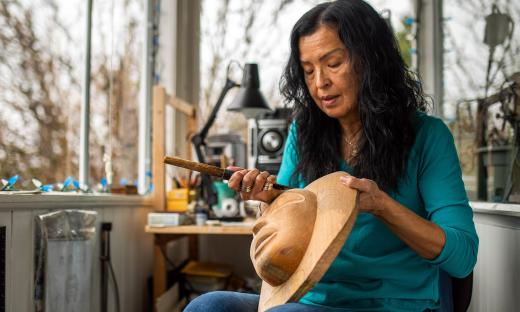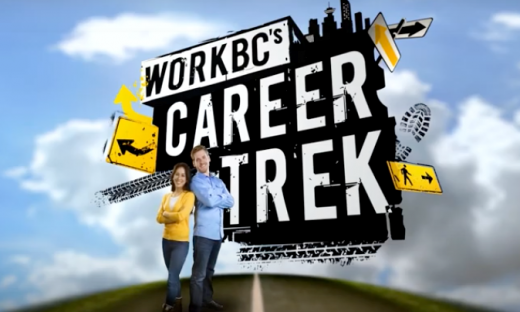This learning activity introduces CLC students to the Career Transition Tool. It demonstrates how transferable work-related skills can be used when looking for work or exploring career options. Students can use their learning to develop a resume or prepare for an interview.
The Career Transition Tool lesson introduces students to the Career Transition Tool and demonstrates how transferable work-related skills can be used when looking for work or exploring career options.
The learning activity introduces students to the concept of transferable work-related skills; to identify the transferable work-related skills they already possess; to identify work related skill sets they may wish to develop further and the activities they could undertake to develop them; and reflect on which work related skills connect to the work or education they wish to pursue.
Students can use the list of their personal transferable work-related skills to help them develop a resume or prepare for a job interview.
Worksheet A: Career transitions and transferable work-related skills (available for download)
Extension Resource: Hard Skills vs. Soft Skills: What's the Difference? (thebalancecareers.com)
Other Requirements: Internet, computer, tablet or smartphone.

Research your occupation using Explore Careers and find out the transferable work-related skills you have. Using the Career Transition Tool enter your occupation and investigate other careers that use your transferable work-related skills. Choose the career profile of one or more occupations that are listed and select work-related skills. This will allow you to demonstrate the process when you are introducing the learning activity to students.
- What are transferable work-related skills and how do I identify them?
- What transferable work-related skills have I developed that could help me further myself at work or in school.
- Which transferable work-related skills are consistently used in some of the occupations that I am interested in pursuing?
- Which transferable work-related skills are most important to me? Which ones do I think I will use to help guide my life/work plans?
- Which skills do I need to develop to achieve my work and/or learning skills?
- What are my next steps to achieve my skills development goals that will contribute to furthering my career goals?
This lesson introduces students to WorkBC’s Career Transition Tool and demonstrates how transferable work-related skills can be used when looking for work or exploring career options.
The learning activity introduces students to the concept of transferable work-related skills; to identify the transferable work-related skills they already possess; to identify work related skill sets they may wish to develop further and the activities they could do to develop them; and reflect on which work-related skills connect to the work or education they wish to pursue.
Students can use the list of their personal transferable work-related skills to help them develop a resume or prepare for a job interview.
- Learn about the concept of transferable work-related skills as referenced on the Explore Careers webpage.
- Identify the transferable work-related skills they already possess (developed through engagement in employment, school, hobbies or volunteer experiences).
- Identify the transferable work-related skills that are consistently used in some of the occupations they are interested in pursuing by viewing the related occupations in the Career Transition Tool.
- Identify work-related skill sets they may wish to develop further to help them achieve their work and/or learning goals.
- Identify the activities they could do to develop the work-related skills further.
- Reflect on their learning and articulate next steps to achieve their work-related skills development goals.
- Introduce students to the concept of transferable work-related skills.
- Transferable work-related skills are talents and abilities that are developed and used in many different jobs and career paths and can be acquired through employment, school, internships, hobbies and volunteer experiences. These skills help a person achieve successful performance at a job or at school.
- People learn these skills through experiential learning, social interactions and practice.
- While there are technical work-related skills (for example: using an electric saw, operating small machinery, using a microscope) that are key to job success, work-related skills are often transferable from job situation to job situation and are foundational to success at work or in educational settings.
- Some examples of transferable work-related skills include communication skills, research, decision making or financial management.
- Transferable work-related skills are valued by employers across all types of work situations and industry sectors.
- Identifying your transferable work-related skills is key to finding work that matches your skills and abilities. This is a positive step in setting goals to help achieve your career aspirations.
- In pairs/small group ask students to:
- Brainstorm a list of transferable work-related they believe they possess.
- Identify a couple of occupations where these skills are integral to being successful at the job.
- Ask several groups to share and confirm they have identified transferable work-related skills, not technical work-related skills.
- Demonstrate the three resources that students will use in Part Two of the learning activity.
- Using Explore Careers, show students how to locate the career profile of the occupation they wish to pursue.
- Using the work-related skills definition link (different for each career profile), show students the list of skills and their definitions. Make note of any skills that were discussed already.
- Using the Career Transition Tool, show students to type in the occupation/key word to find their occupation of choice. Then, show them the list of related occupations. Select the career profile and then the work-related skills.
- Assign and introduce Worksheet A: Career Transition Tool and the task at hand.
- Let students know they will be exploring how their personal transferable work-related skills – developed through their high school years – can be applied in various jobs and occupations, including their occupation of choice.
- Review the worksheet instructions so they understand what is expected.
- Allow them time to either compete the worksheet in class or assign as homework.
The final part of the learning activity will focus on encouraging students to think about their future career options what else they need to do to refine their transferable work-related skills to help them achieve success at work or in further learning.
- Ask students to share their work with a partner. Have them identify the key skills they want to develop and share how they plan to do that.
- Ask students to share what they learned about their current career of choice and if they had any new insights into other occupations they may be interested in. (Did they find a new career direction; did they find an occupation that has related transferable work-related skills they could think about applying for once they get more experience; does their current employment help them develop their skills?)
- Students could answer the self-assessment questions and hand that in along with their worksheet.
- Collect the worksheet and mark for completeness against your assessment rubric.
Self-Assessment
Ask students to provide evidence of the statements:
- I learned about transferable work-related skills and how they related to job transitions.
- I identified the transferable work-related skills I possess.
- I identified which transferable work-related skills are consistently used in some of the occupations that I am interested in pursuing.
- I identified the transferable work-related skills that are most important to me and which ones I think I will use to help guide my life/work plans.
- I identified which skills I need to develop further to achieve my work and/or learning skills goals.
- I articulated the steps I need to take to achieve my skills development goals that will contribute to furthering my career goals.
Teacher Assessment
Teacher creates a marking rubric related to the three learning activities for the items they want to collect for assessment.
This lesson plan supports elements of British Columbia's Career Education Curriculum as outlined below. For further details on the curriculum itself, visit the Ministry of Education's Career Education Curriculum webpage.
- Career-life development includes ongoing cycles of exploring, planning, reflecting, adapting and deciding.
- Personal career-life development:
- Reflection strategies.
- Self-assessment to achieve goals that advance preferred career-life future.
- Examine: Assess personal transferable skills, identify strengths and those skills that require further refinement.
- Experience: Engage in, reflect on and evaluate career-life exploration.
- Communication:
- Acquire, interpret and present information.
- Critical thinking:
- Ask questions, consider options and draw conclusions.








